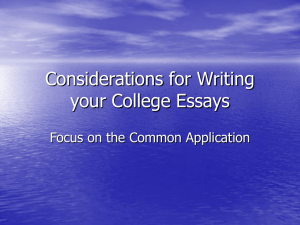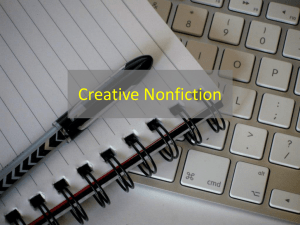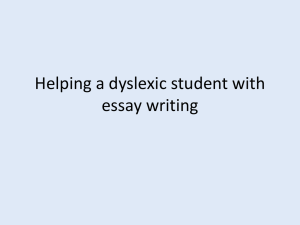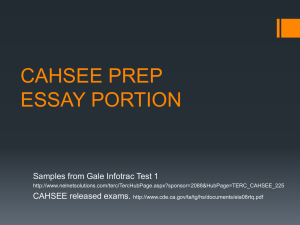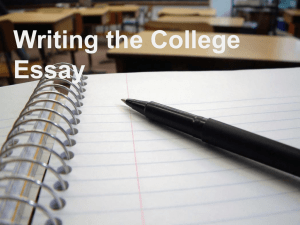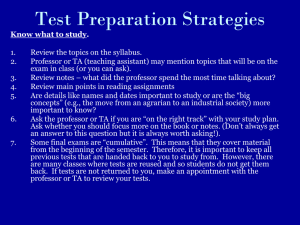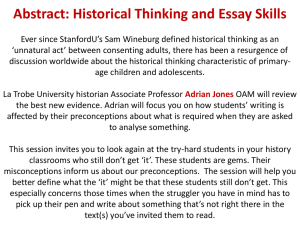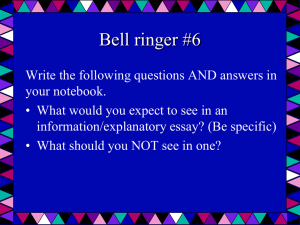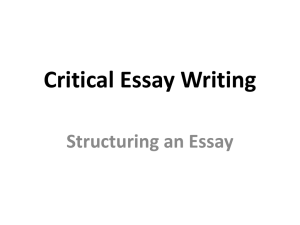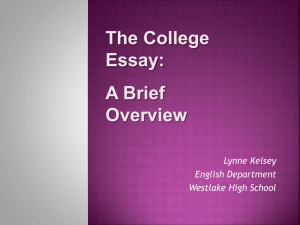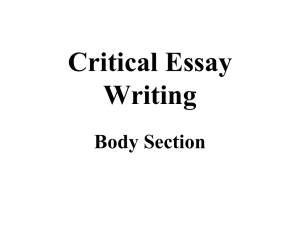Source
advertisement
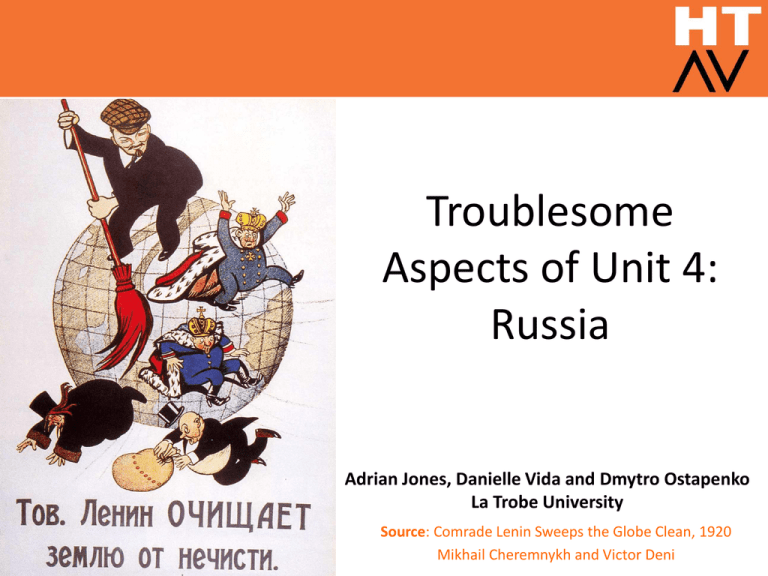
Troublesome Aspects of Unit 4: Russia Adrian Jones, Danielle Vida and Dmytro Ostapenko La Trobe University Source: Comrade Lenin Sweeps the Globe Clean, 1920 Mikhail Cheremnykh and Victor Deni Key problem areas in AOS2: Russia • Distinction between popular demands/promises (“Peace, Bread, Land”; “All Power to the Soviets” and Bolshevik ideology (Marxist-Leninism) • Popular ideals vs. party ideals • Theme of crises and compromise • Essay response • Key ideas that are often neglected or misunderstood: • Orthodox Marxism vs. Marxist-Leninism • Democratic centralism • War Communism • Internationalism Approaching the Essay Response • Start to PLAN the main sub-arguments of the essay during reading time. • Underline keywords in question and make sure you reuse them in the essay. For instance, ‘‘people’s tragedy” in the 2011 exam paper. • Create a brief paragraph plan. • Aim to structure the essay chronologically or thematically • Although you need to show you understand the sequence of events (causes and consequences), avoid ‘narrative’ in your essay (storytelling). • Your main focus should be on presenting a relevant argument supported with specific use of knowledge. Use of evidence It is essential that your argument is supported with precise factual detail Discuss and explain the relevance of these facts as you raise them – do not assume that they speak for themselves Different types of evidence • • • • • • Dates/names Statistics Reference to specific events and historical documents Eye-witness accounts Soviet historiography - see Short History of the CPSU Secondary sources (historians views) - a bonus, but not essential. This should NOT take over your essay! Use very short quotes that can be easily integrated into your sentences or paraphrase specific historians arguments. Always avoid ‘stand alone’ quotes. ***Try to critically engage with different viewpoints Sentence starters and examples: Critical evaluation of historians views • One must take into account the fact that Pipes is a Cold Warrior historian… • Pipes/Lynch, coming from the liberal perspective… • The fact that_____’s account was written prior to the opening of the Soviet archives is a major limitation of this explanation. • Revisionist historian, Fitzpatrick.... • Revisionist cultural historian Orlando Figes... • Such a viewpoint, clearly deriving from the Marxist school of thought... Example sentences on historians views • Volkogonov, while typically classified as a revisionist, is a complex Russian historian, whose personal experience of living in the Soviet Union ultimately influenced his perspective on the Russian Revolution. • Whilst John Reed was an eye-witness participant of the October Revolution, his account lacked objectivity and is ideologically shaded by his role as founder of the American Communist Party… • However, one cannot ignore the fact that Trotsky’s account of the Russian Revolution is written retrospectively, following his forced exile during the Stalin regime. More examples… • Christopher Hill’s Marxist view of the Russian Revolution, which is highly sympathetic towards Lenin, must be understood in light of the immediate post-World War II, pre-Cold War atmosphere in which Hill was writing in; the horrors of the Nazi Holocaust were revealed to the Western world, and popular feeling towards Britain’s ally, Russia, was still hospitable. • The “History of the CPSU”, the official Soviet perspective, is undoubtedly reflects the official Bolshevik propaganda of the Stalin era, written for the soul purpose of glorifying and justifying the existence of the Soviet state. Exam/SAC essay preparation for Russia AOS2 • Many different types of practice essay questions • Use of violence, coercion and terror • Compromise of ideals • Crises and response • Impact on society • For peace of mind, include some topic specific questions: i.e. civil war, war communism; crises of 1921. • Change and continuity (be careful not to focus on the old regime!) • Group feedback sheets and discussion after each practice essay – a great time saver and a way to provide more detailed constructive feedback to students (see handout). • Students may want to repeat responses after feedback discussion

